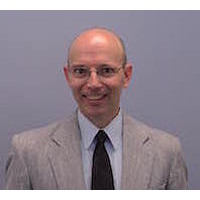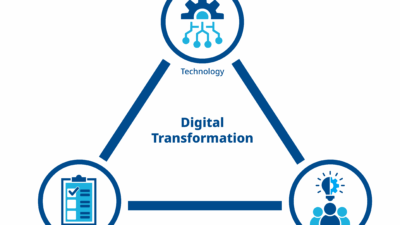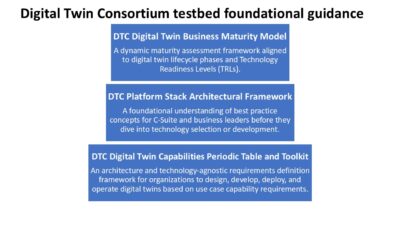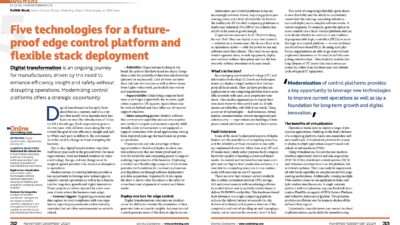Accelerating innovation for process controls, digital transformation and automation were among topics at Emerson Exchange 2025. Company executives and customers were among those providing advice.

Digital transformation insights for process automation
- Understand how mergers and acquisitions add automation software capabilities to Emerson, and other changes make the company more responsive.
- Learn how artificial intelligence enhances operator effectiveness in a process facility.
- Motiva and Merck discuss digital transformation and benefits of integrating automation resiliency.
- Personnel process management can improve in four ways.
Emerson executives say changes have made the company more responsive to industry needs; mergers and acquisitions add automation software capabilities, including artificial intelligence interactions with operators; and Motiva and Merck were among customers touting digital transformation benefits for automation. These were among revelations during the opening keynote session at Emerson Exchange 2025, with the theme of “Accelerating Innovation,” in San Antonio, Texas, May 19-22, 2025.

Lal Karsanbhai, Emerson president and CEO (Figure 1), during the Emerson Exchange 2025 opening keynote, Emerson is an industry steward. From smart sensors to finding new ways of working, the global industrial landscape shifted and stakes are high. We need to adapt, optimize and innovate all at once. Every company has been tested, including ours. We’re facing dynamic markets, evolving needs, competing priorities, and technological changes without signs of slowing. It demands foresight, and to navigate around the corner. Today we will:
- Share the launchpad for industrial automation across the industry.
- Explain why we’re best positioned to lead in next era of industrial automation.
- Help you shape what’s next.
Mergers and acquisitions add automation software capabilities
When I became CEO in 2021, it was clear we needed to evolve fundamentally. We asked: “What kind of company do we need to be to lead in today’s industrial landscape?” Portfolio, technologies, culture and how to create value. Since then, $40 million was invested in mergers and acquisitions to reposition for long-term success for what you need in automation software, testing and analytics. Software is increasingly vital in automation. Emerson exited some legacy businesses that were not aligned with our vision. We’re improving how we make decisions and measure progress. We refocused where we can deliver the most value as a technology leader. Aspentech and NI [formerly National Instruments] are essential to delivering value. We applied vision and effort in the portfolio and pace of innovation, structurally, financially and technologically to lead the fastest transformation that the industry has seen.
The Emerson Boundless Automation architecture integrates edge, cloud, artificial intelligence (AI) and automation. Data is no longer something simply to collect. Data must help organizations make relevant decisions in real time.
Convergence continues, involving systems, teams, technologies, operational technology (OT), information technology (IT), control and analytics, hardware and software. It creates friction and causes a shift in how we’re thinking and the way we improve, Karsanbhai said. We have transformed Emerson to meet convergence with boundless automation, edge, cloud, AI and automation.
Karsanbhai said this gives customers the possibility of interoperability and intelligence to adapt with changes and make better decisions across product lifecycles, with control platforms that integrate seamlessly with existing systems. It puts industry first with seamless integration and optimized operation.
Now Project Beyond unifies operations, changing the approach to industrial automation. It adds value without increasing complexity.
Karsanbhai thanked the Emerson team for taking risks to accept changes and better position the company to partner with customers.
“We performed the transformation with urgency and focus and never lost sight of where we need to go,” Karsanbhai said. Customers and partners hold us to high standards. Expectations are set to make us better.
We’re not a company that’s catching up. We’re a leader, an innovator and put the customer first. We’re ready to shape future of the automation industry and are excited to share that with you, Karsanbhai said.
AspenTech acquisition, a “foundation to increase innovation”

Claudio Fayad (Figure 2), CTO of AspenTech, (part of Emerson since the acquisition was completed in March), said AspenTech creates a strong foundation to increase innovation. We work with creators and innovators, Fayad said, the real users of our technologies. The community of users empowers our world.
“You never have to wonder if you’re making difference. Just look around to see. We’re working together to make one of most exciting automation companies in the world. With nearly 20 years at Emerson, I’m here to help improve operations at your organizations, experiencing strength of the organization and accelerate progress, learning a lot on the way, working closely with many of you. I’ve never been more excited.”
Automation and controls are becoming more optimized and more autonomous, allowing customers to take meaningful steps toward the future without adding complexity, to increase throughput while expanding life span with safety and flexibility.
Emerson and AspenTech together provides a unique opportunity, Fayad said. He showed a short video describing Project Beyond as data unleashed. Using digital intelligence to optimize to bring automation together is easy. Let’s go beyond, the video offered.
Fayad continued, explaining how the companies have built an enterprise operations platform, software-defined, moving organizations beyond what they can do today, bridging the present and the future. Project Beyond combines knowledge and function for actionable insights to help the workforce. The software points to the right actions for your operational needs.
Project beyond, six dimensions
Six dimensions of Project Beyond are:
1. Computing power resides in the cloud and on the edge. Edge architecture can be fast, easy and secure.
2. Secure networking and connectivity with the ability to dive into IT infrastructure in a seamless and secure way inside and beyond the enterprise operations platform.
3. Unified data operations (data ops), providing a single source of truth across the enterprise. It’s based on unique operations and configurations to operate and optimize automation.
4. An application catalog curated for your needs in an easy-to-use platform.
5 AI orchestration for an enabled AI workforce, integrating several AI agents with models to meet your needs, with the needed support.
6. Zero-trust security, providing a new approach to security for automation and controls.
Project Beyond combines historical data, real-time data, large language model (LLM), process simulation software and process design software. It will augment what you already have, using distributed control systems and other technologies.
AspenTech Ava (an AI-based avatar to help operators and others) has the same flexibility and ease of use as familiar software, securely, with the complete knowledge of plant to help guide daily operations. It enables optimized, autonomous operations while eliminating or reducing work. Fayad showed an example.
Ava example demonstration, operator interaction
Operator: Ava, why can’t I reach ideal throughput?
Ava: The process is limited by feed. I recommend change the feedrate from 80 to 81. Do you want me to make the change?
Ava: The plant is producing as expected. Do you want me to scheduled maintenance for next week? I see an impending warning on valve movement time.
Project Beyond brings our vision to life. Interact with Project Beyond on the show floor, showcasing its current availability. You have helped make this happen with partnership and collaboration. More innovations are to come.
Ava: “Claudio, Pump 101 needs attention. It’s time to get back to work.”
Emerson Exchange 2025, nearly 300 sessions

Ms. Vidya Ramnath, Emerson senior vice president and chief marketing officer, (Figure 3) said Emerson is ready to transform customer operations to make them smarter, more efficient and connected. We are working with customers and partners to solve world’s most pressing problems.
The customer-centric advisory council brings focus to the Emerson Exchange program by organizing nearly 300 sessions, providing a range of solution and technology topics to drive innovation and achieve goals.
Ramnath encouraged the audience to learn, share and network with peers. With 30 years at Emerson, she is excited to be working directly with customers, helping to bridge the gap, listen customers and help apply new tools as they enter a digital-first future. Embracing digital transformation redefines solutions to very complex problems as digital transformation and automation are evolving, reimagining operations in face of rapidly changing market demands. Digital transformation helps in upgrades of process units more quickly and effectively and to pinpoint reliability problems. On stage, Ramnath introduced several customers, industry leaders who have applied digital transformation for greater operational agility and intelligence.
Motiva applies digital transformation

Tobenna Emecheta, senior manager engineering and technology, digitalization and technical excellence, Motiva, (Figure 4) said digital transformation provides a step change across the value chain to maximize value, deepen understanding and optimize production throughout the industry technology stack while enhancing cybersecurity. Among key turning point was connectivity, data visualization, data integration and enabling digital transformation of processes and people. Over time, digital transformation use cases continue in advanced operations, logistics and supply change, commercial excellence and customer engagement and asset management. Next efforts include optimizing lifecycle strategies, leveraging opportunities and using automation and innovations to increase margins and decrease downtime, using artificial intelligence and machine learning for support.
Merck integrates automation resiliency
Lisa McEvoy, Merck associate vice president of digital manufacturing (Figure 5), said in seeking smarter pharmaceutical solutions at the Dublin plant, teams became digital champions after understanding the value. The plant didn’t have fully integrated scheduling and wanted to accelerate throughput, increase transparency, unlock data and move more quickly to flow data seamlessly across manufacturing systems. Autonomous automation resiliency is part of Merck DNA, McEvoy said. In challenging each other to be better, digital transformation became a shared vision.
Personnel process management: 4 ways to find a way

Josh Linkner, a technology entrepreneur, bestselling author and venture capital investor (Figure 6), discussed some concepts and examples covered in his book, “Big Little Breakthroughs: How small everyday innovations drive oversized results.” Linkner said four core mindsets to “Find a way” are to:
1. Start before you’re ready, because you could lose to an opponent if you wait to clearly see a path to the finish line.
2. Break it to fix it. Proactively imagine something new. If there were no rules, what could you do? Removing thoughts and constraints from the current competitive landscape can lead to new paths.
3. Seek the unexpected. Applying creativity can bring new meaning and enthusiasm to work.
4. Fall seven times, stand eight. Confidence isn’t expecting to always get it right. It’s knowing how to bounce back.
Linkner encouraged applying Emerson automation, digitalization and expertise to break, fix, seek the unexpected and to find a way.
Mark T. Hoske is editor-in-chief, Control Engineering, WTWH Media, [email protected].
Related insights from Control Engineering



